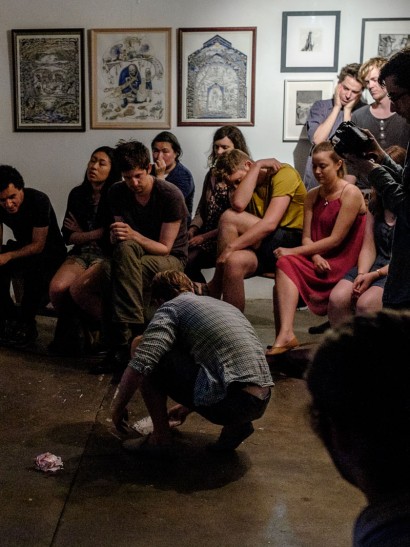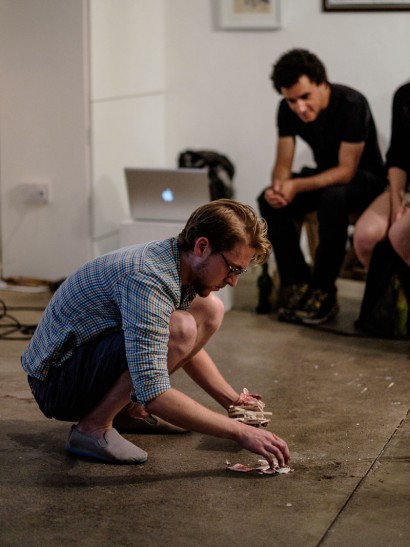[Factory]
Living Score
Open Instrumentation
Open Duration
2014
Commissioned by Mira Benjamin
About
[factory] originated as a set of 22 verbal scores linked by a geographical map, with each score representing an individual conceptual area or room. Mira Benjamin, the original performer, and I agreed upon a risky proposal: she would read the scores only once and then delete them, allowing the work to exist solely in her memory and inviting forgettings and linguistic permutations to infect the ephemeral score-object itself. Mira is now the living score for the work, voluntarily responsible for its transferral, transformation and translation.
Performances
- March 2014, Mira Benjamin, Cluster: New Music + Integrated Arts Festival, Winnipeg, MB
- May 2014, Mira Benjamin, Oslo, Norway
- August 2014, Mira Benjamin and Isaiah Ceccarelli, nu:nord, Oslo, Norway
- August 2014, Mira Benjamin and Isaiah Ceccarelli, London, UK
- January 2015, Michael Baldwin, Huddersfield, UK
- June 2015, Mira Benjamin, Music and/as Process Conference, London, UK
- July 2015, Michael Baldwin, Hundred Years Gallery, London, UK
Other Documentation
- photo (c) Dimitri Djuric
- photo (c) Dimitri Djuric
Writing
The following is an excerpt from an interview between Jennie Gottschalk and Mira Benjamin. This interview has been excerpted in Gottschalk’s Experimental Music Since 1970.
JG: So I wanted to talk about the process around these pieces… about the transmission of scores, what possibilities there are for an experiment to take place in that activity, at that intersection.
MB: Luke uses the term “accessing” – someone who wants to know [factory] must access an archive of sorts.
JG: So you’re the archive?
MB: I’m a living score – one of six or so people who house Luke’s various pieces. The only currently active living score, I believe.
JG: Is your memory the score of [factory], or you yourself?
MB: That distinction is not really made. My relationship and dialogue with my own memory is an essential part of the process of actualizing these pieces. It is inevitable in this process that I will forget and unintentionally ‘rewrite’ certain elements, and that each act of relaying a piece will feed back into my own memory. The original artifact of [factory] will degrade and this is the creative, transformative process that is opened by this approach. This process is all about contamination.
JG: Would it be in keeping with the spirit of the project to actually ask you to relay a piece [factory] to me now?
MB: If I started telling it to you now, your interview would just be full of “redacted”s! *laughs* To allow memory to take priority in this process, I can only transmit pieces during a dedicated accessing session, and they can’t be written down or transcribed.
Some thoughts from Michael Baldwin as well as a short video of [factory]
The following is an excerpt of an accessing session between Michael Baldwin and Mira Benjamin
MBa: Before we dive directly into this, I’m curious to know what the bounds of the score are. So, for example, in our conversation today, at what point do you begin transmitting [factory]? Is it intermittent throughout the conversation or is there a moment at which it is delivered?
MBe: This entire conversation is the score for [factory]. Everything we talk about contributes to it. When I actualise [factory], I base the performance on my memory of Luke’s texts in combination with an understanding of the mentality of the project. That’s why I was telling you about the map before.
MBa: Sorry, just so I’m clear, is this a part of [factory]?
MBe: Yeah, this is one of the rooms, it’s called [redacted] or [redacted]. So you’re in a situation where either you allow a memory to, or can’t stop a memory from, [redacted]. And it could be [redacted], or it also could [redacted]. Because of the conditions of the first room I gave you, I think it allows for that. And you just [redacted].

